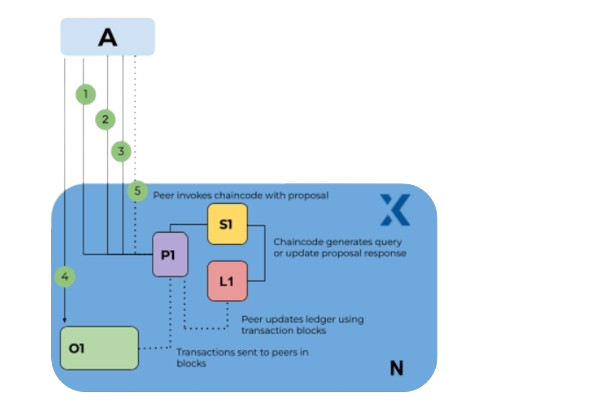How will this work?
How will this work?
Instead of using one channel for every API’s, we will be using multiple channels for one API. These channels will be created after a specific timeframe or after a certain number of transactions. All three peers will be part of those channels but the transaction processing will only be done on the peers.
Active Channels
Channels that are being used to process the transactions. In-active Channels: Channels that are not being used to process the transactions. For e.g. we will have channels as:

Peers, in conjunction with orderers, ensure that the ledger is kept up-to-date on every peer. In this example, application A connects to P1 and invokes chaincode S1 to query or update the ledger L1. P1 invokes S1 to generate a proposal response that contains a query result or a proposed ledger update. Application A receives the proposal response and, for queries, the process is now complete.
A creates a transaction out of all of the responses for updates, which it sends to O1 for ordering. O1 aggregates network transactions into blocks and distributes them to all peers, including P1. Before committing the transaction to L1, P1 verifies it. Once L1 is updated, P1 generates an event, received by A, to signify completion.